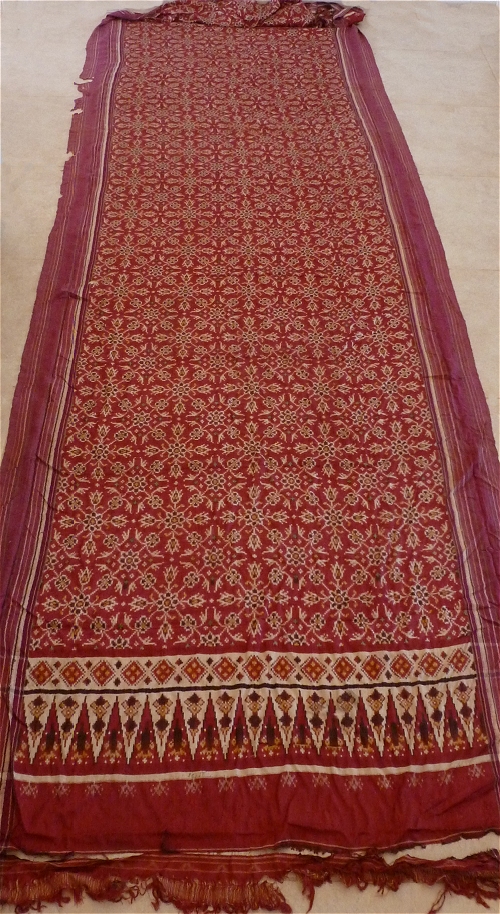| |
 
 | | | |
062 India, Gujarat
Patolu
| | Locale: | Patan region. | | Period: | 18th or early 19th c. | | Yarn: | Silk, hand-spun | | Technique: | Double ikat | | Panels: | 1 | | Size: | 114 x 455 cm (3' 8" x 14' 11") LW: 3.99 | | Design: | Field decorated with circular floral pattern called jilamprang, and border of triangles alternated with inverted triangles called tumpal. It was this patola, pattern more than any other, that served as an inspiration to weavers all across the Indonesian archipelago. | | Comment: | Some holes along the edges, but very few in field, so that the visual impact of the cloth is not impaired. End borders are damaged at both ends, one is almost coming off. Still, all in all, a very good example of this rare type of trade cloth. It is generally assumed that it was Portuguese traders from Daman and Diu, near Gujarat, who first brought patolas to Indonesia. Later the Dutch VOC brought many patolas to Indonesia. | | Background: | Chapters on India and Gujarat. | | Compare: | 061 063 307 | | Sources: | Buehler and Fischer, The Patola of Gujarat. Guari Parimoo Krishnan, The Divine Within, page 219. Dawson, Traditional Indonesian Textiles, Fig. 3. Khan Majlis, Woven Messages, Fig. 4. Nearly identical to Powerhouse Museum No. A10240. | | |

©Peter ten Hoopen, 2024
All rights reserved.
|
|


